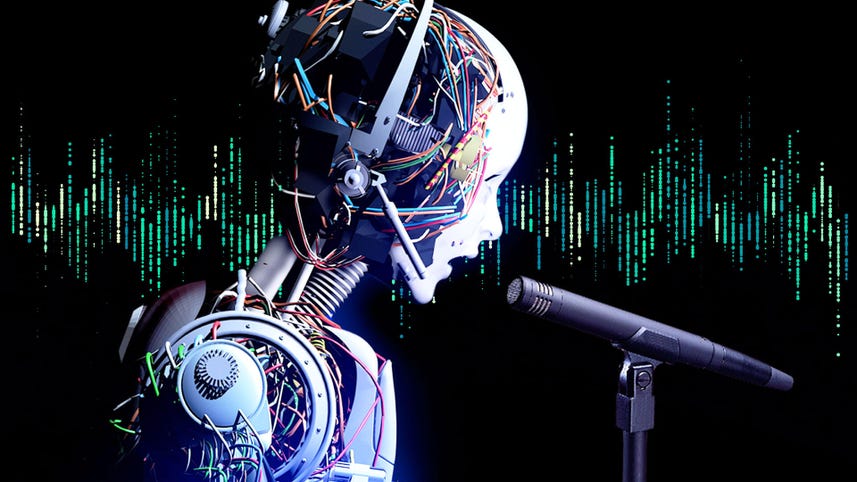Create Your Own Voice Assistant: OpenAI's New Tools Unveiled

Table of Contents
Understanding OpenAI's Contribution to Voice Assistant Development
OpenAI has significantly advanced the field of voice assistant development through its contributions to natural language processing (NLP) and speech recognition. Their powerful models have drastically reduced the complexity and time required to build sophisticated voice assistants. OpenAI's role is pivotal in making this technology accessible to a wider audience.
Specifically, models like Whisper and GPT-3/4 are instrumental in creating robust voice assistants.
- Advanced speech-to-text capabilities via Whisper API: Whisper provides highly accurate transcription, even in noisy environments, forming the crucial foundation for understanding user voice input. This significantly improves the accuracy of your voice assistant compared to older technologies.
- Natural language understanding and generation powered by GPT models: GPT models enable your voice assistant to understand the nuances of human language, interpret intent, and generate natural-sounding, contextually relevant responses. This is what allows for truly conversational interactions.
- Improved context awareness and conversational flow: These models excel at maintaining context across multiple turns in a conversation, making the interaction feel more natural and less robotic. This is a key differentiator in creating a high-quality user experience.
- Reduced development time and complexity: OpenAI's pre-trained models significantly simplify the development process, allowing developers to focus on the unique aspects of their voice assistant rather than building core NLP components from scratch. This democratizes access to sophisticated voice assistant technology.
Key Tools and Technologies for Building Your Voice Assistant
While OpenAI provides essential building blocks, creating a complete voice assistant requires additional technologies and careful planning. Choosing the right tools is crucial for building a scalable and robust system.
- Selection of suitable cloud platforms for hosting and scalability: Cloud providers like AWS, Google Cloud, and Azure offer scalable infrastructure to handle the demands of a voice assistant, ensuring it remains responsive even with a large user base. Consider factors like cost, ease of integration with OpenAI APIs, and available services when making your selection.
- Integration of speech synthesis APIs for natural-sounding responses: Services like Amazon Polly, Google Cloud Text-to-Speech, and Microsoft Azure Text-to-Speech provide high-quality speech synthesis, transforming text responses into natural-sounding audio output. Selecting a provider with a voice that matches the persona of your voice assistant is important.
- Database management for storing user data and preferences: A database is essential for storing user profiles, preferences, interaction history, and other relevant data. Popular choices include cloud-based databases like AWS DynamoDB, Google Cloud Firestore, or managed SQL databases.
- Framework options (Python, JavaScript, etc.) and their pros/cons: The choice of development framework depends on your experience and project requirements. Python, with its extensive libraries for NLP and machine learning, is a popular choice, while JavaScript offers advantages for web-based interfaces.
Step-by-Step Guide: Building a Basic Voice Assistant
Building a basic voice assistant using OpenAI's tools is a manageable task, even for developers with limited experience. This high-level overview focuses on the crucial steps:
- Setting up your development environment: Install necessary libraries, configure API keys, and set up your chosen cloud platform.
- Connecting to OpenAI APIs (authentication, API calls): Obtain API keys from OpenAI and learn how to make API calls to access Whisper for speech-to-text and GPT models for natural language understanding and generation.
- Implementing speech-to-text and text-to-speech functionalities: Integrate your chosen speech-to-text and text-to-speech APIs into your application.
- Designing basic conversational flows and commands: Define the core functionality of your voice assistant and create the logic to handle user commands and generate responses. Start with simple commands and gradually increase complexity.
- Testing and iterating on your assistant's performance: Thoroughly test your voice assistant and refine its responses based on user feedback. Iterative development is key to building a successful voice assistant.
Advanced Features to Consider
Once you have a basic voice assistant working, explore these advanced features to enhance its capabilities:
- Integration with smart home devices: Control smart lights, thermostats, and other devices using voice commands.
- Personalization based on user preferences: Tailor responses and features to individual user profiles.
- Contextual understanding and memory: Enable your assistant to remember previous interactions and use that context in subsequent conversations.
- Proactive assistance and suggestions: Offer relevant suggestions based on user habits and context.
- Multi-lingual support: Expand your assistant's capabilities to support multiple languages.
Conclusion
Creating your own voice assistant using OpenAI's powerful tools is a rewarding and achievable endeavor. By following the steps outlined above and leveraging the capabilities of Whisper and GPT models, you can build a personalized virtual assistant that caters to your specific needs. The process involves setting up your environment, connecting to OpenAI APIs, implementing speech recognition and synthesis, designing conversational flows, and iteratively refining its performance. Remember to explore advanced features to enhance user experience.
Ready to create your own voice assistant? Start exploring OpenAI's resources and unleash your creativity today! Dive into the world of voice assistant development and build the smart assistant you've always dreamed of. Don't wait, start building your own voice assistant now!

Featured Posts
-
 Macrons Call To Eu Buy European Not American
May 21, 2025
Macrons Call To Eu Buy European Not American
May 21, 2025 -
 Baggelis Giakoymakis Mia Klironomia Ponoy Apo To Bullying Kai Toys Basanismoys
May 21, 2025
Baggelis Giakoymakis Mia Klironomia Ponoy Apo To Bullying Kai Toys Basanismoys
May 21, 2025 -
 Mum Jailed For Tweet Following Southport Stabbing Home Detention Denied
May 21, 2025
Mum Jailed For Tweet Following Southport Stabbing Home Detention Denied
May 21, 2025 -
 Reddits Top 12 Ai Stocks For 2024 A Deep Dive
May 21, 2025
Reddits Top 12 Ai Stocks For 2024 A Deep Dive
May 21, 2025 -
 Vodacom Vod Reports Better Than Expected Earnings And Payout
May 21, 2025
Vodacom Vod Reports Better Than Expected Earnings And Payout
May 21, 2025
